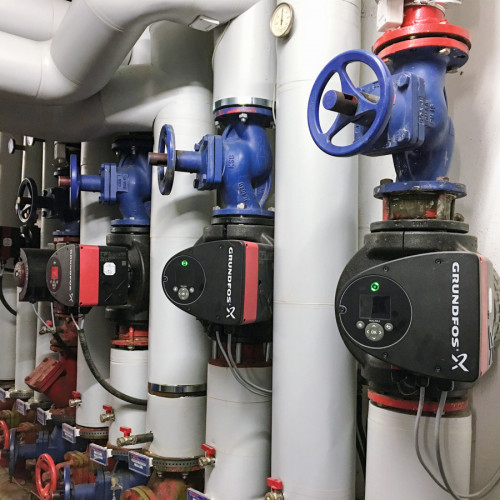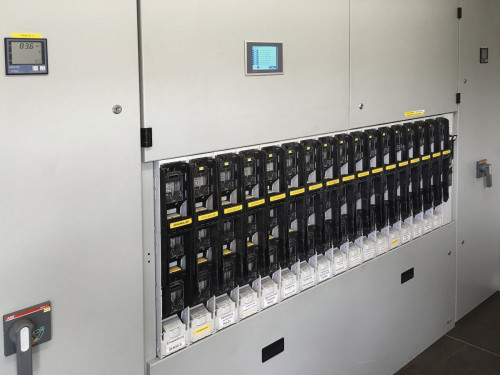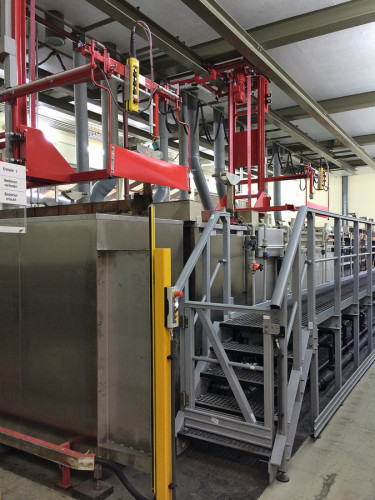The path to cheap gas is blocked for the foreseeable future and the price of electricity alone remains at a high level. However, hardly any energy has been saved in the industry to date, and the necessary knowledge is often lacking, as the seminar "Climate neutrality in electroplating technology" at the Fraunhofer IPA has now shown. In future, Strähle Electroplating CEO Sven Reimold will share his expertise and provide practical tips for efficient plant technology and more economical production.
The starting point
Strähle Galvanik GmbH in Zaisenhausen, Baden-Württemberg, was founded in 1951 and has been managed by the author since 2009. The company has been continuously expanded since its foundation and can therefore look back on numerous conversion measures.
Until the start of the energy-saving measures, there were four boiler rooms. Production, social rooms, offices and incoming and outgoing goods were heated separately. In addition to the essential electricity for the operation of electrolytic processes, energy is primarily required for heating the electrolytes (Fig. 1), media and for drying.
 Fig. 1: New heating control for electrolytes
Fig. 1: New heating control for electrolytes
In 1990, long before energy savings were considered, the oil heating systems used up to that point were gradually converted to gas. At that time, gas was still considered a clean and inexpensive alternative. In addition, handling oil requires storage space and energy for maintenance.
In 1990, oil heating systems that had been in use until then were gradually converted to gas. At that time, gas was still considered a clean and inexpensive alternative.
Even in the first expansion stage, around 30,000 liters of oil were replaced by gas. The savings that result from switching from oil to gas can vary considerably depending on the energy price. In any case, the simple handling is an advantage. Although gas alternatives are being developed, they cannot be introduced as quickly as the current government would like. Converting gas into electricity in the company is also an issue, especially as electricity and waste heat are used immediately for own consumption.
First steps towards energy efficiency
The most important element of the activities to save energy is to determine the consumption values in the company as accurately as possible, broken down according to the different consumers and consumer departments with their different systems and equipment. To this end, a start was made, for example, with the installation of measuring transformers on the existing low-voltage main distribution board at the transformer (Fig. 2).
 Fig. 2: Transformer station that determines consumption values via measuring transformers
Fig. 2: Transformer station that determines consumption values via measuring transformers
The investigations quickly revealed which departments contain the power-consuming components. The result was the alkaline-zinc drum system with its drying and cooling systems. What should happen to the drum system now? Continued operation would result in high electricity costs, for which the customer would only pay pennies. Should the plant be left standing? Or is there a way to reduce the electricity costs incurred? A question that is not the subject of this first episode of the series.
Elsewhere, due to the REACh regulation and interaction with customers, the question arose as to whether the nickel-chromium plant at the electroplating facility would not be better converted to chromium(VI)-free chromium baths - a measure that would have cost a six-figure sum, but would hardly have reduced electricity and heating costs. It should be noted that nickel baths have to be kept at a constant temperature of 60 degrees day and night. At that time, no customer was interested in changing the shifts, let alone paying more. In this case, it was therefore an easy decision to dispense with the nickel-chromium system and invest in converting to an electropolishing system.
Electricity costs and electricity management
In 2012, Strähle Galvanik GmbH had total financial energy costs of around 350,000 euros with two million kWh of electricity and two million kWh of gas. In 2018, it was 185,000 euros and in 2022 it was 300,000 euros again due to higher electricity prices. It is currently difficult to find the right balance. Strähle Galvanik GmbH has been looking into the spot electricity market since 2019 and has made the switch.
Advantage: no expensive electricity contracts had to be concluded in 2022.
The company was also lucky with gas, as the favorable contract runs until 2024 and was not terminated. Under these conditions, the net electricity price was 27 cents and the gas price 1.9 cents.
The electricity price brake did help in 2023. Compared to 2020, however, the costs for an energy-intensive coater like Strähle Galvanik are still three times higher.
Saving gas with refined degreaser
In 2022, the Ministry of Economic Affairs and Climate Change set a target of saving 20% gas in order to relieve the pressure on gas storage facilities. But how can the target be met if the options for saving gas during operation are exhausted?
In 2022, the Ministry of Economic Affairs and Climate Action set a target of saving 20% gas
Don't forget: Gas is used to generate electricity and use the electricity for own consumption as well as waste heat for bathroom heating (Fig. 3).
Then one day a surprising opportunity to save gas arose: A representative of a well-known chemical company told me about a new product from Atotech: a degreaser at 45 degrees in which bacteria eat up grease and oil. A bio-cleaner, so to speak. Whether the product would work was not yet known at the time. But the interest in testing the degreaser immediately was aroused.
After contacting a sales representative from MKS Atotech, the degreaser was tested on the new alkaline-zinc rack system, as the boil-off degreaser is operated here without an oil separator.
Keeping the degreasing at a temperature of 65 to 70 degrees in winter proved to be difficult. Nevertheless, the trial was implemented immediately and supported by Atotech. The first batch has now been in operation since September 2022. It has not yet been restarted or cleaned. Following the successful tests after three months, the next system was converted and then another.
Save gas, increase quality
Since January 2023, five systems at Strähle Galvanik and its subsidiary MVB Metallveredlung Bretten have been running with this system. At Strähle itself, the flow temperature has been reduced from 80 to 60 to 65 degrees. A new batch has not yet had to be made, so no disposal costs have been incurred. Gas consumption could actually be reduced by 12 to 15 % in this way.
As the preparation costs have remained relatively the same due to the increase in chemical costs, this does not have a major impact either. Of course, the quality of the coated parts must not suffer. However, this is currently consistently better, as micro-scale, oil carbon, graphite particles and grease on the surface are better cleaned.
Photos: Strähle/MKS



